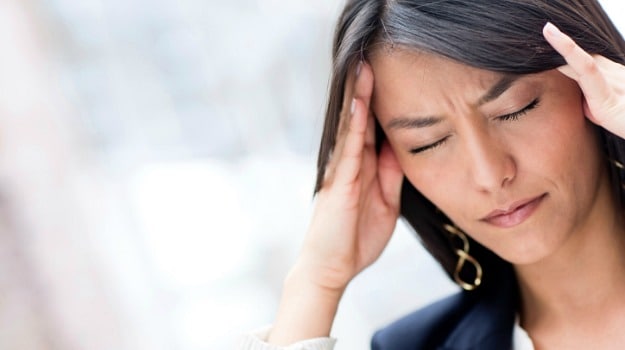(Obesity May Up Migraine Risk)Understanding MigraineHealth experts and medical practitioners have still not been able to uncover the primary cause of migraine; however, genetic and environmental factors do play some role in triggering the condition. Migraine is classified as a neurological disease accompanied by headaches that can bear moderate to severe intensity. The one who suffers complains of a pulsating pain in one side of the head. In most cases the condition is characterised with visual auras wherein a person sees flashes, or shimmering lights surrounding a black spot. Apart from this, a patient may also experience vomiting, nausea, or sensitivity towards light, smell and noise. I never experienced visual disturbances (aura) during a migraine attack; however, excessive heat, noise and being in a brightly lit room would make me feel worse and irritable.According to Dr. Sunil Sharma, General Physician and Head of Emergency, Madan Mohan Malviya Hospital, New Delhi, "Lifetime prevalence of tension or stress triggered headache is 78% and close to 16% is that of migraine headaches. Migraine headaches are broadly of two types, one which is characterised with an aura and others that are more common but are without an aura."(Migraine in Teens Linked to Chewing Gum)Managing Migraine
I was one of those few lucky ones who experienced a gradual waning of the condition with lifestyle changes and proper medication. I was prescribed with Migranil which could also be substituted with another drug called Vasograin. My medication is categorised under simple analgesics which are essentially non-steroidal anti-inflammatory drugs or a combination of paracetamol, caffeine and aspirin. Such drugs are prescribed to those with moderate symptoms in the initial stages of the condition.
Caffeine is said to help in easing migraine pains in the initial stages, that's why most people are prescribed with painkillers comprising caffeine. However, caffeine when taken in large quantities can result in withdrawal attacks in later stages and hence must be taken in moderation.
What Else Can Help?
A few tweaks in your daily routine and lifestyle can help a great deal in managing the condition better. If you can identify any food item that prompts the pain, make sure you limit its consumption or do away with it completely. Avoid alcohol and tobacco and ensure you don't take stress. For me, stress or crying would trigger a spell of attacks, hence it is very important that you unwind - get a head massage, feel positive and make efforts towards mitigating stress. Regular exercise, practicing relaxation techniques like yoga and meditation helps a great deal as well. Apart from these, acupuncture is also known to provide some relief."Maintaining a headache diary may be useful along with physical therapy and bio-behavioural therapy, " added Dr. Sharma.
Here are some other points that one should keep in mind to manage migraine better.
- Do not skip meals
- Don't be on an empty stomach
- Don't expose yourself to extreme heat
- Get proper sleep
- Don't exert
Ease Out
Inflammation in blood vessels is one of the primary causes of most headaches. Foods that are enriched with antioxidants and anti-inflammatory properties help a great deal with headaches. Eating flaxseeds, buckwheat and foods rich in B Vitamins and omega 3 also aid in combating recurrent headaches. According to the American Academy of Neurology, herbs like butterbur and feverfew have properties that can not only aid in treating migraine but preventing the condition as well. Apart from these, there are a few other herbs that go into the making of topical balms that can help relieve from headaches, these include basil, lavender and peppermint.
We all have our set of traits, things that work for us and not for others. There is no hard and fast rule here; there are no definite patterns to follow. Don't speculate or jump to conclusions on your own. If you experience recurrent, pulsating headaches that last for more than a couple of hours and affect one part of your head, please seek medical help.






